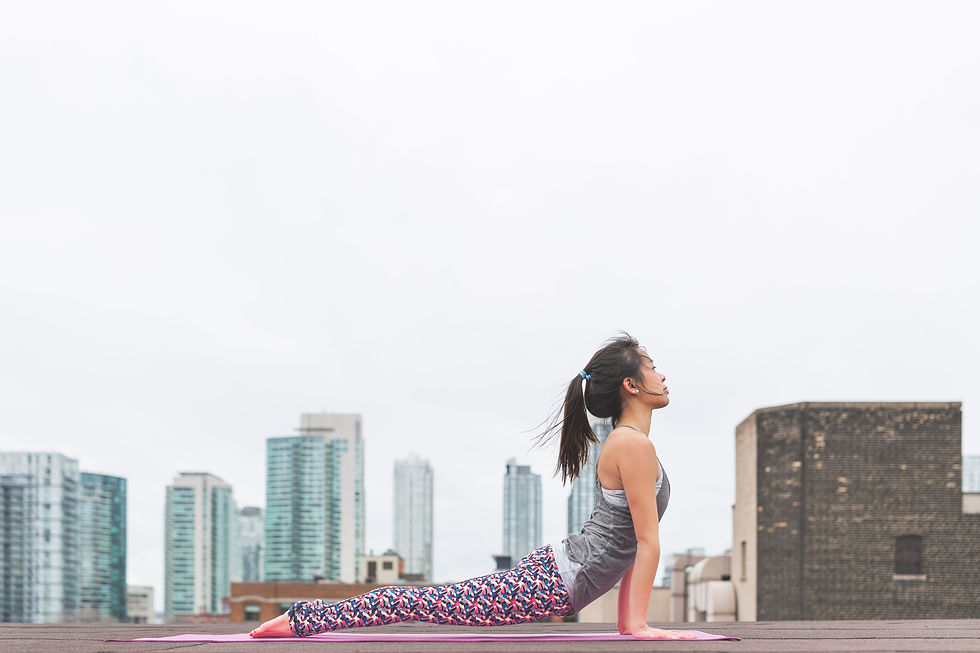How to Modify Yoga to Protect Your Spine
- Mark A. Lopes, D.C.
- Sep 28, 2017
- 3 min read

Yoga is a popular workout practice that aims to increase flexibility, mindfulness, strength, and overall health and wellbeing. While yoga can be beneficial, improper form and certain positions can actually cause more harm than good for your spine. When you’re consistently pushing yourself to the limits of your body’s flexibility, excessive stretching can actually create unstable joints in the long run. When you stretch, you feel a sense of release and looseness that reduces tension, but it actually can also create tiny tears in your joints and discs. These tiny tears can create painful big injuries when bending over or moving on a regular day. We actually only use 50% of our full range of motion on a regular day, which doesn’t require excessive stretching. In fact, about the only time we use 100% of our range of motion is when we turn our neck and head to look behind us while backing-up a car.
In order to modify your yoga practice to prevent future injuries, you’ll want to avoid extreme bending, twisting, and leaning. Keep your head, torso, and pelvis in line and focus on stretching your hips, shoulders, arms, and legs with a stable core.
While many yoga poses are relatively spine safe when you practice good form and spinal awareness, there are some poses that you will need to approach with extra caution, or even avoid completely. The following are six examples (there are others) of those yoga poses you must modify to protect your spine:

Seated Forward Fold
Any bending with completely straight knees is bad for your lower spine, creating excessive bending. Instead, keep your knees slightly bent and maintain neutral position in your lower back. Your lower spine has a natural curve called a lordosis (mild backward curve), and you want to avoid greatly distorting this natural curve in the opposite direction.

Shoulder Stand
It’s best to avoid this yoga pose completely, since it creates excessive bending and pressure in your upper spine and neck.

Triangle Pose
This pose requires bending forward and twisting your spine at the same time. This combination is actually the easiest way to damage your lumbar discs with the excessive forward pressure and twisting required from this pose.
Photo from: Yoga Lily
Camel Pose
This position excessively jams the joints in your back. An effective alternative to this position is the cow pose from the cat/cow combination. Practicing cow pose instead of camel is a safer way to achieve similar results.

Cobra / Upward Facing Dog
Extreme reverse bending in the spine creates excessive pressure in the lower back in this pose. If your practice includes a cobra position, modify this pose by only coming up to your elbows, similar to a Sphinx pose instead.

Half Lord of the Fishes / Seated Spinal Twist
With any twisting pose, you want to avoid forcing your twists with extra help from your arms, legs, or other objects. Instead, lift your chest high, keep your head on your shoulders, and only use your torso muscles to perform the twist moderately. Don’t use your arms to push or pull your body into either direction, for it will create extra strain on your spine.
When practicing yoga, you should utilize it to promote good health, wellbeing, and leading an active life instead of pushing your body to its end limits with flexibility. When you test your limits, it can lead to injury, which will only send you backwards in your progress and journey to better health. The perceived benefits of excessive stretching are largely over-rated and the risk is not worth it.
























Comments